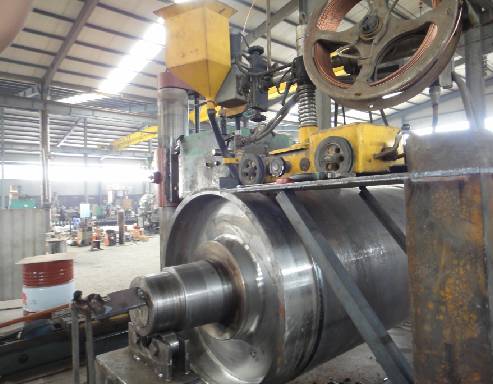 Afrikaans
Afrikaans  Albanian
Albanian  Amharic
Amharic  Arabic
Arabic  Armenian
Armenian  Azerbaijani
Azerbaijani  Basque
Basque  Belarusian
Belarusian  Bengali
Bengali  Bosnian
Bosnian  Bulgarian
Bulgarian  Catalan
Catalan  Cebuano
Cebuano  Corsican
Corsican  Croatian
Croatian  Czech
Czech  Danish
Danish  Dutch
Dutch  English
English  Esperanto
Esperanto  Estonian
Estonian  Finnish
Finnish  French
French  Frisian
Frisian  Galician
Galician  Georgian
Georgian  German
German  Greek
Greek  Gujarati
Gujarati  Haitian Creole
Haitian Creole  hausa
hausa  hawaiian
hawaiian  Hebrew
Hebrew  Hindi
Hindi  Miao
Miao  Hungarian
Hungarian  Icelandic
Icelandic  igbo
igbo  Indonesian
Indonesian  irish
irish  Italian
Italian  Japanese
Japanese  Javanese
Javanese  Kannada
Kannada  kazakh
kazakh  Khmer
Khmer  Rwandese
Rwandese  Korean
Korean  Kurdish
Kurdish  Kyrgyz
Kyrgyz  Lao
Lao  Latin
Latin  Latvian
Latvian  Lithuanian
Lithuanian  Luxembourgish
Luxembourgish  Macedonian
Macedonian  Malgashi
Malgashi  Malay
Malay  Malayalam
Malayalam  Maltese
Maltese  Maori
Maori  Marathi
Marathi  Mongolian
Mongolian  Myanmar
Myanmar  Nepali
Nepali  Norwegian
Norwegian  Norwegian
Norwegian  Occitan
Occitan  Pashto
Pashto  Persian
Persian  Polish
Polish  Portuguese
Portuguese  Punjabi
Punjabi  Romanian
Romanian  Russian
Russian  Samoan
Samoan  Scottish Gaelic
Scottish Gaelic  Serbian
Serbian  Sesotho
Sesotho  Shona
Shona  Sindhi
Sindhi  Sinhala
Sinhala  Slovak
Slovak  Slovenian
Slovenian  Somali
Somali  Spanish
Spanish  Sundanese
Sundanese  Swahili
Swahili  Swedish
Swedish  Tagalog
Tagalog  Tajik
Tajik  Tamil
Tamil  Tatar
Tatar  Telugu
Telugu  Thai
Thai  Turkish
Turkish  Turkmen
Turkmen  Ukrainian
Ukrainian  Urdu
Urdu  Uighur
Uighur  Uzbek
Uzbek  Vietnamese
Vietnamese  Welsh
Welsh  Bantu
Bantu  Yiddish
Yiddish  Yoruba
Yoruba  Zulu
Zulu High-Quality Return Rollers for Conveyor Belts | Durable & Reliable Solutions
Return Rollers for Conveyor Belts An Essential Component for Efficiency
In the world of material handling and industrial operations, conveyor belts play a pivotal role in transporting goods efficiently across various distances. One of the critical components of these systems is the return roller, which is essential for ensuring the smooth operation and longevity of the conveyor belt. Understanding the function and significance of return rollers can help businesses optimize their material handling processes.
What is a Return Roller?
A return roller is a type of roller located beneath the conveyor belt’s return side. After the materials being transported have reached their destination, the belt needs to return to its starting position to continue its operation. The return roller supports this process by guiding the belt back to its original point without sagging or twisting. This ensures that the belt maintains proper tension and alignment, which are crucial for effective operation.
Functions of Return Rollers
1. Support and Alignment The primary role of return rollers is to provide support to the conveyor belt as it travels back empty. By keeping the belt aligned and stabilized, return rollers prevent misalignment that could lead to increased wear on the belt, reduced efficiency, and potential system failure.
2. Minimizing Belt Wear The continuous operation of a conveyor belt can lead to significant wear and tear over time. Return rollers contribute to minimizing this wear by reducing friction and providing smooth, even movement. This helps in extending the lifespan of the belt and decreasing maintenance costs.
return roller for conveyor belt

3. Tension Maintenance Proper tension is crucial for the effective transportation of materials. Return rollers help maintain the necessary tension throughout the conveyor belt system, ensuring that the belt operates correctly and efficiently.
4. Facilitating Material Flow Although return rollers are not directly involved in the transportation of materials, they play a supportive role that enables optimal flow within the conveyor system. A properly functioning return roller allows for seamless transitions back to the loading side, ensuring that the next batch of materials can be loaded without delays.
Types of Return Rollers
There are various types of return rollers, each designed for specific applications and environments. Common types include flat return rollers, rubber-coated rollers, and self-cleaning return rollers. The choice of return roller depends on factors such as the type of material being transported, the speed of the conveyor, and the operating environment.
Conclusion
In summary, return rollers are a vital component of conveyor belt systems, providing support, reducing wear, and maintaining proper tension. Their functionality is crucial for ensuring that conveyor systems operate efficiently and effectively, ultimately impacting overall productivity. Selecting the right type of return roller for your specific application can lead to significant improvements in efficiency, reduced operational costs, and enhanced safety. As industries continue to evolve and demand more efficient material handling solutions, the role of return rollers will only become more significant, making it essential for businesses to understand and prioritize this critical component in their conveyor systems.
-
Revolutionizing Conveyor Reliability with Advanced Rubber Lagging PulleysNewsJul.22,2025
-
Powering Precision and Durability with Expert Manufacturers of Conveyor ComponentsNewsJul.22,2025
-
Optimizing Conveyor Systems with Advanced Conveyor AccessoriesNewsJul.22,2025
-
Maximize Conveyor Efficiency with Quality Conveyor Idler PulleysNewsJul.22,2025
-
Future-Proof Your Conveyor System with High-Performance Polyurethane RollerNewsJul.22,2025
-
Driving Efficiency Forward with Quality Idlers and RollersNewsJul.22,2025





























